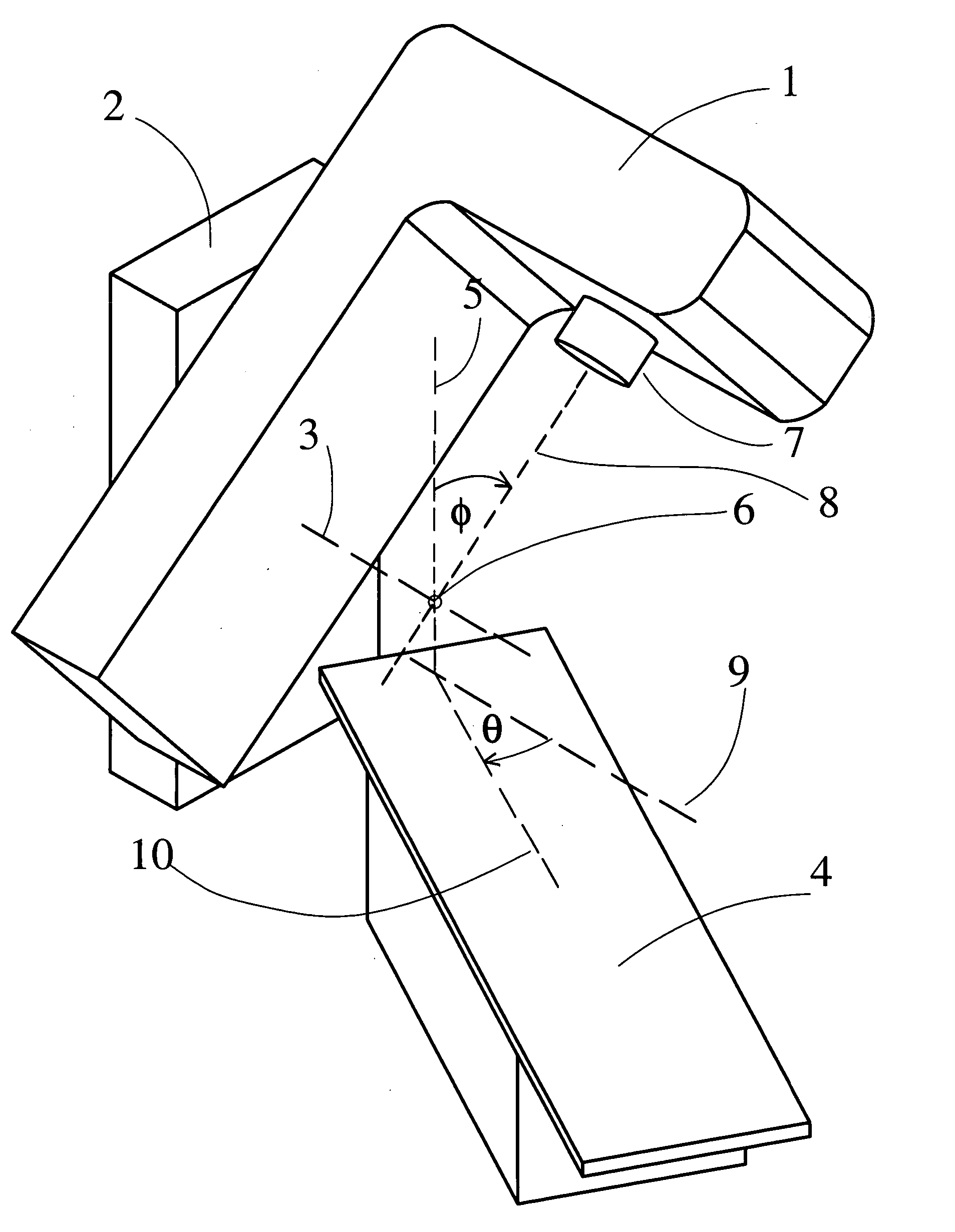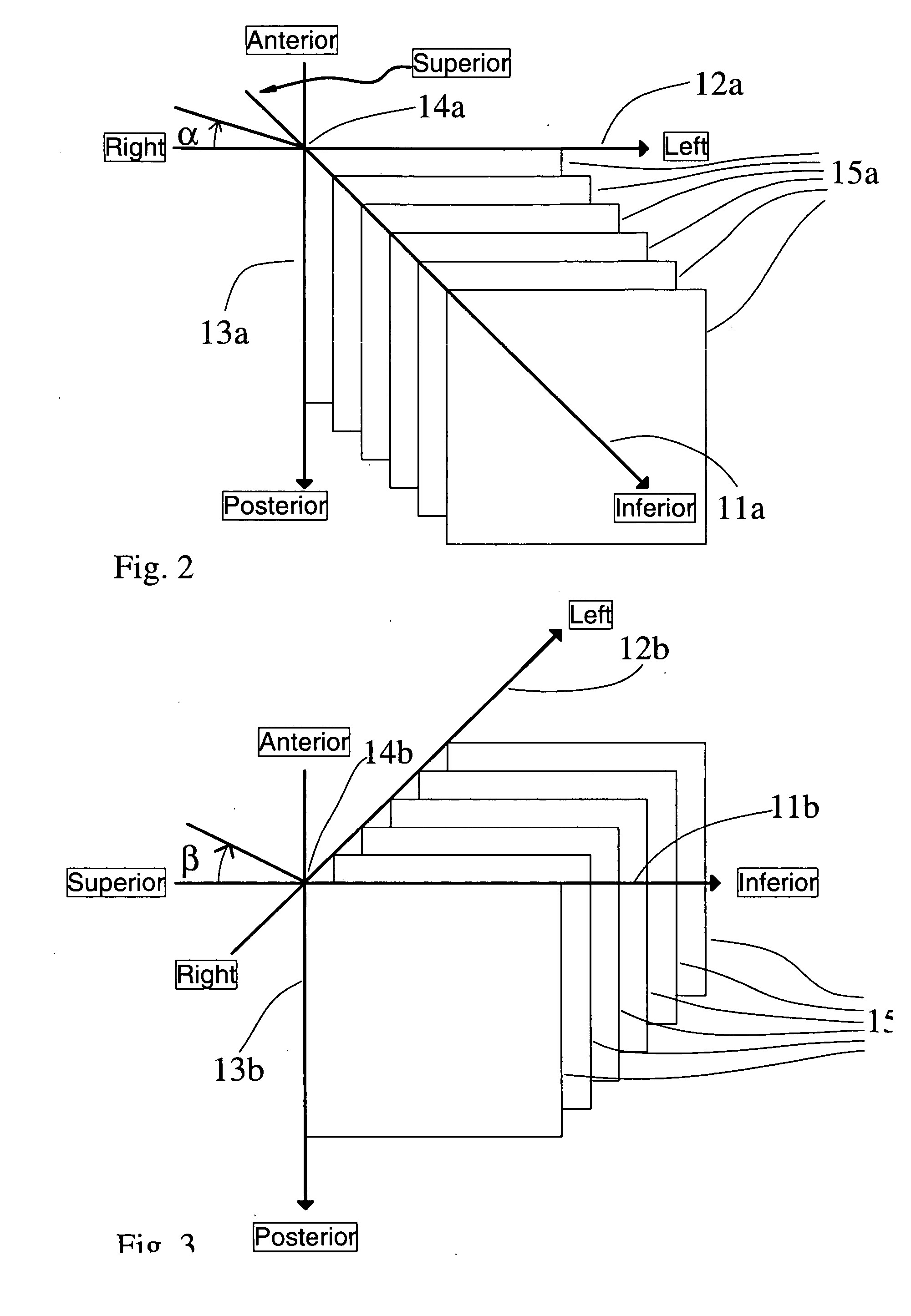Method for assisted beam selection in radiation therapy planning
a radiation therapy and beam selection technology, applied in radiation therapy, radiation therapy, x-ray/gamma-ray/particle irradiation therapy, etc., can solve the problems of speeding up the search, insufficient favor in clinical applications, and expensive computer time, and achieve the effect of easy incorporation
- Summary
- Abstract
- Description
- Claims
- Application Information
AI Technical Summary
Benefits of technology
Problems solved by technology
Method used
Image
Examples
example
[0073] In order to illustrate and clarify the preferred embodiment of the invention, the optimization of an IMRT radiation treatment plan for the mathematical phantom of FIG. 4 will be described in detail. Initially, a standard optimization will be described, followed by a second optimization using the assisted beam orientation selection method of the present invention.
[0074] From the work of T. Bortfeld and W. Schlegel in “Optimization of beam orientations in radiation therapy: some theoretical considerations”, Physics in Medicine and Biology, Vol. 38, (1993), pp. 291-304 and that of S. Webb in “Optimizing the planning of intensity-modulated radiotherapy”, Physics in Medicine and Biology, Vol. 39, (1994), pp. 2229-2246, which has been followed well by the Radiation Oncology profession in all the intervening years, a nine-beam co-planar treatment plan with equal angular spacing will be devised for the phantom of FIG. 4 placed on the patient table 4 with the phantom centroid 18 plac...
PUM
 Login to View More
Login to View More Abstract
Description
Claims
Application Information
 Login to View More
Login to View More - R&D
- Intellectual Property
- Life Sciences
- Materials
- Tech Scout
- Unparalleled Data Quality
- Higher Quality Content
- 60% Fewer Hallucinations
Browse by: Latest US Patents, China's latest patents, Technical Efficacy Thesaurus, Application Domain, Technology Topic, Popular Technical Reports.
© 2025 PatSnap. All rights reserved.Legal|Privacy policy|Modern Slavery Act Transparency Statement|Sitemap|About US| Contact US: help@patsnap.com



